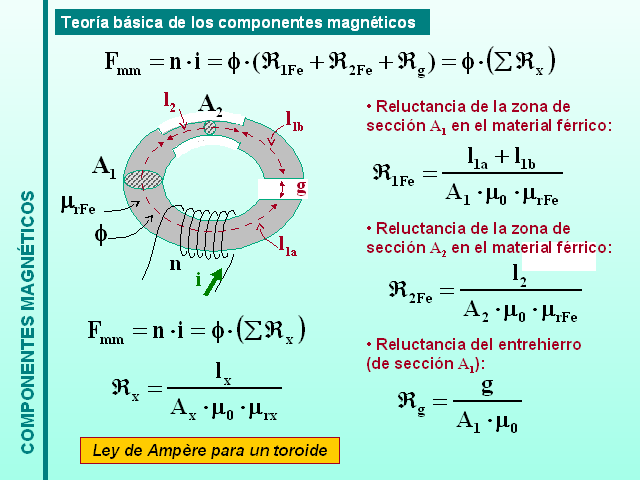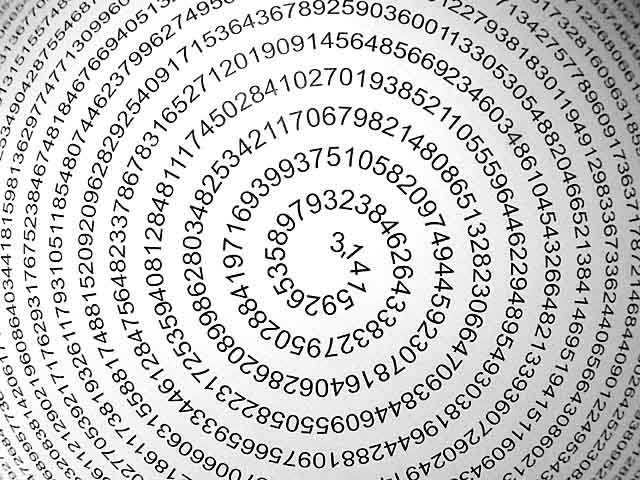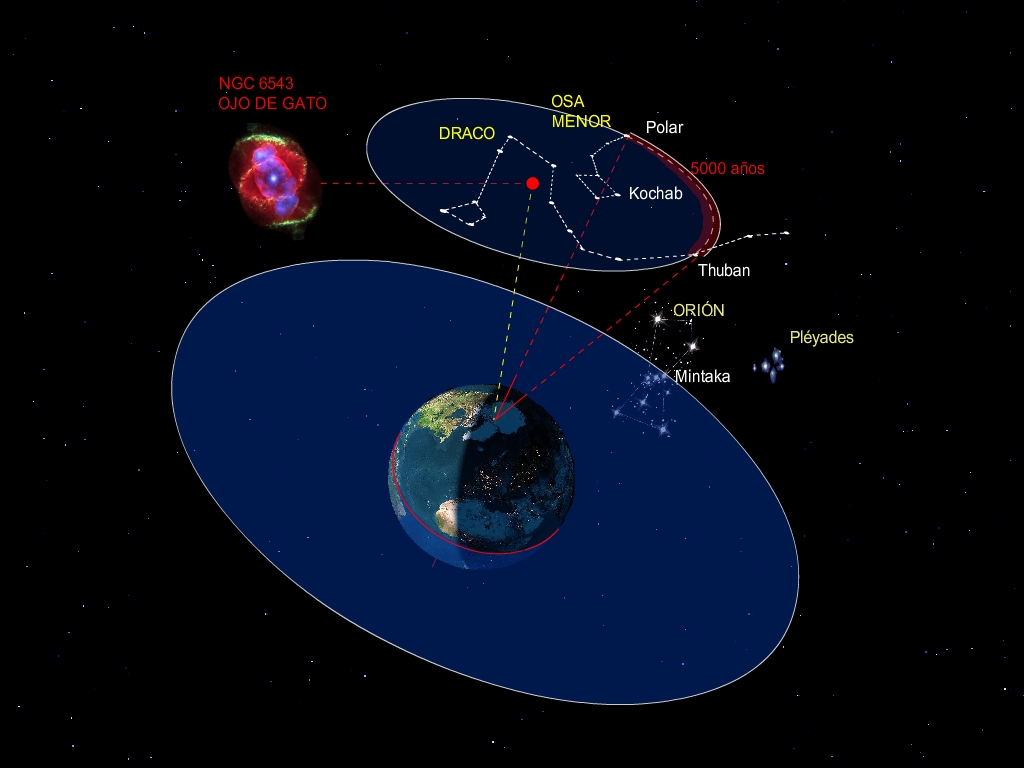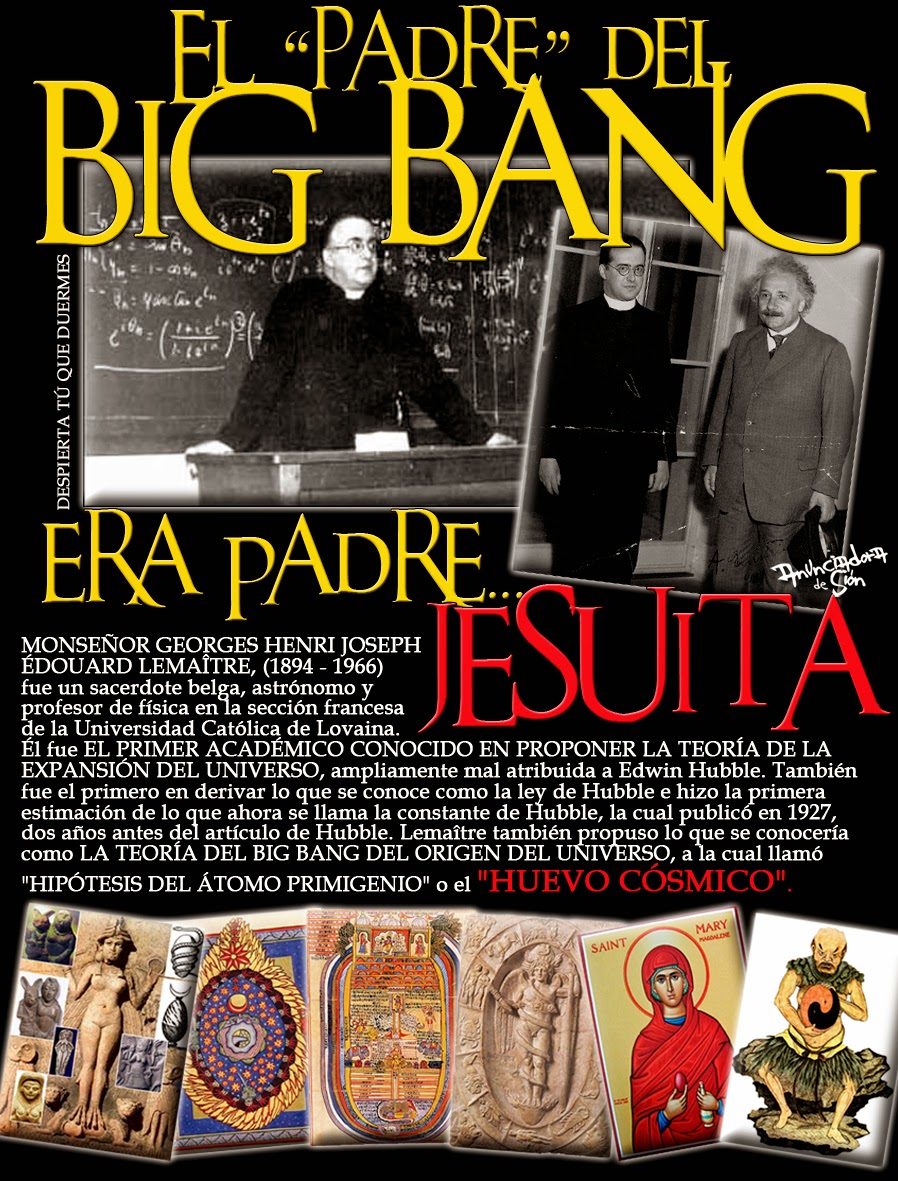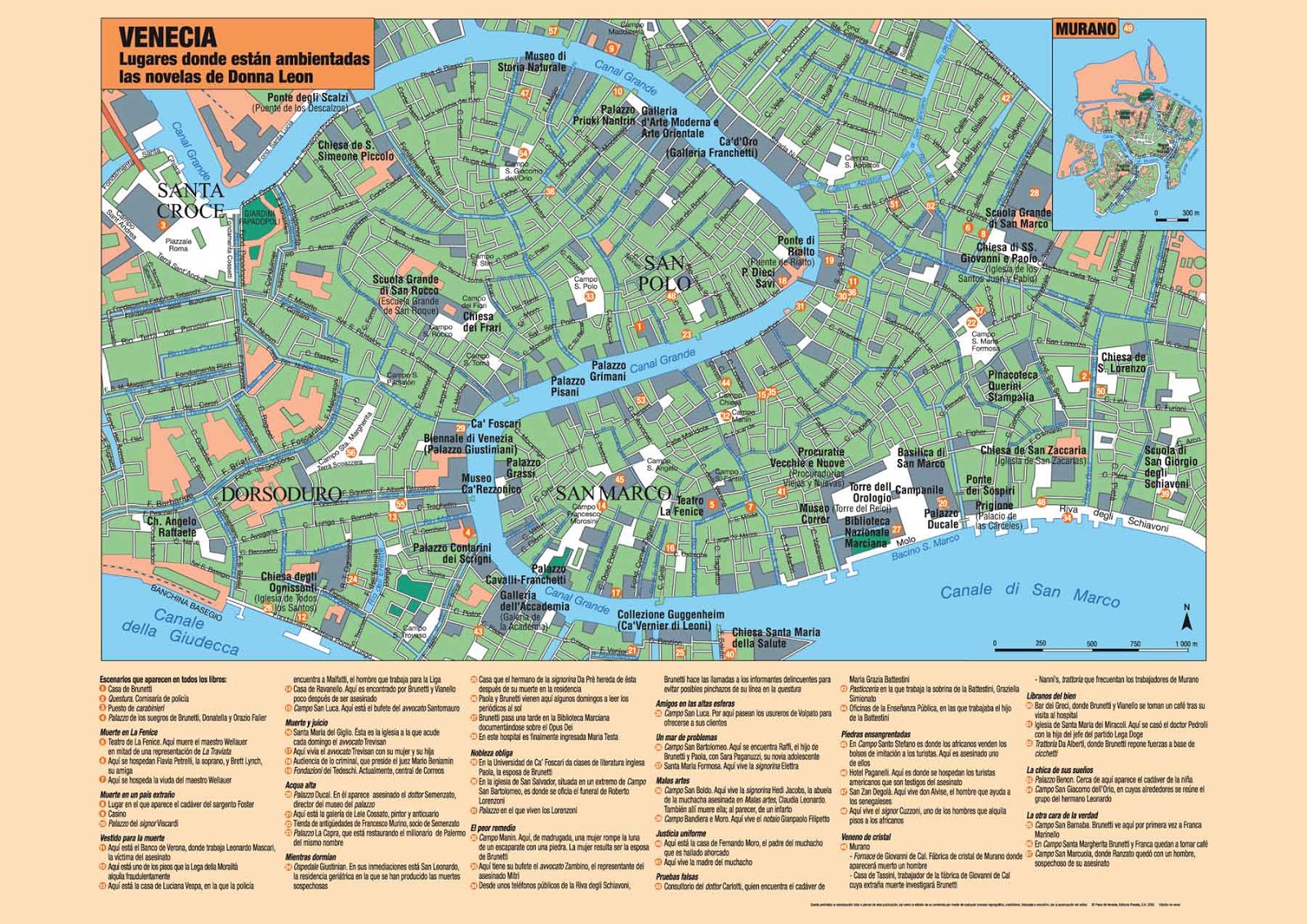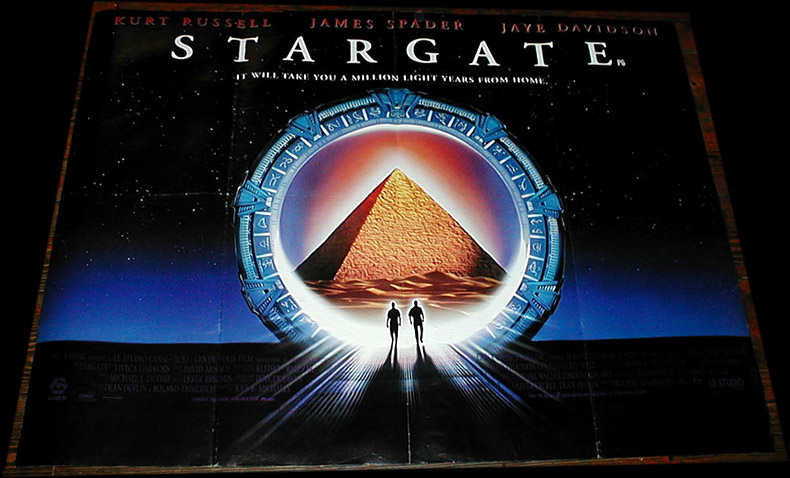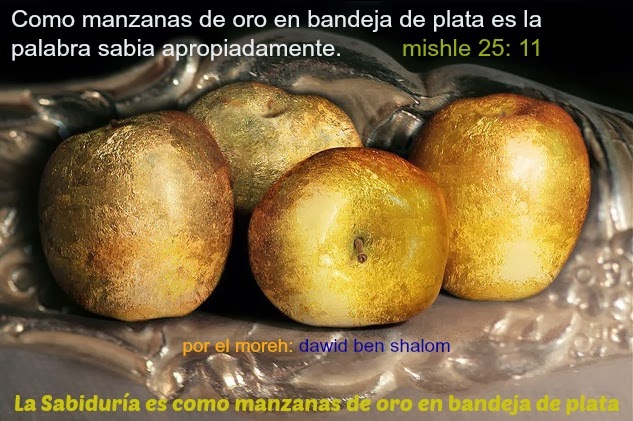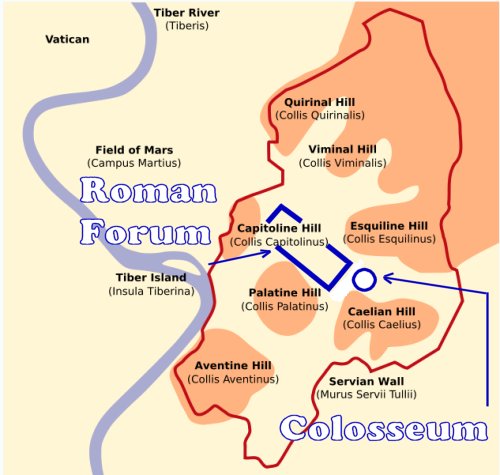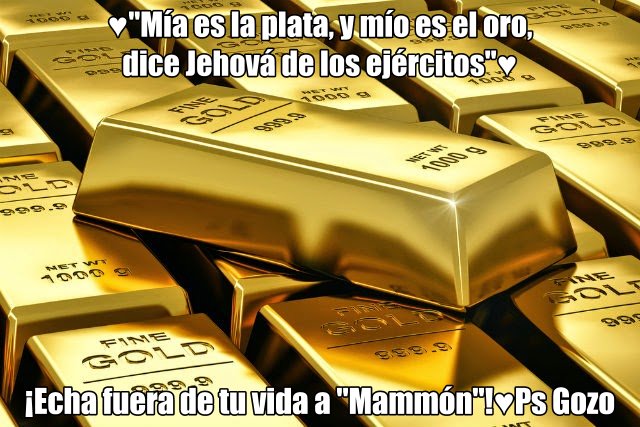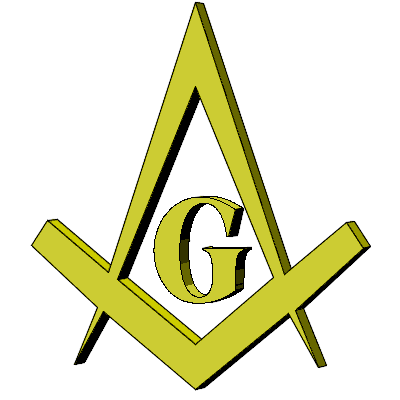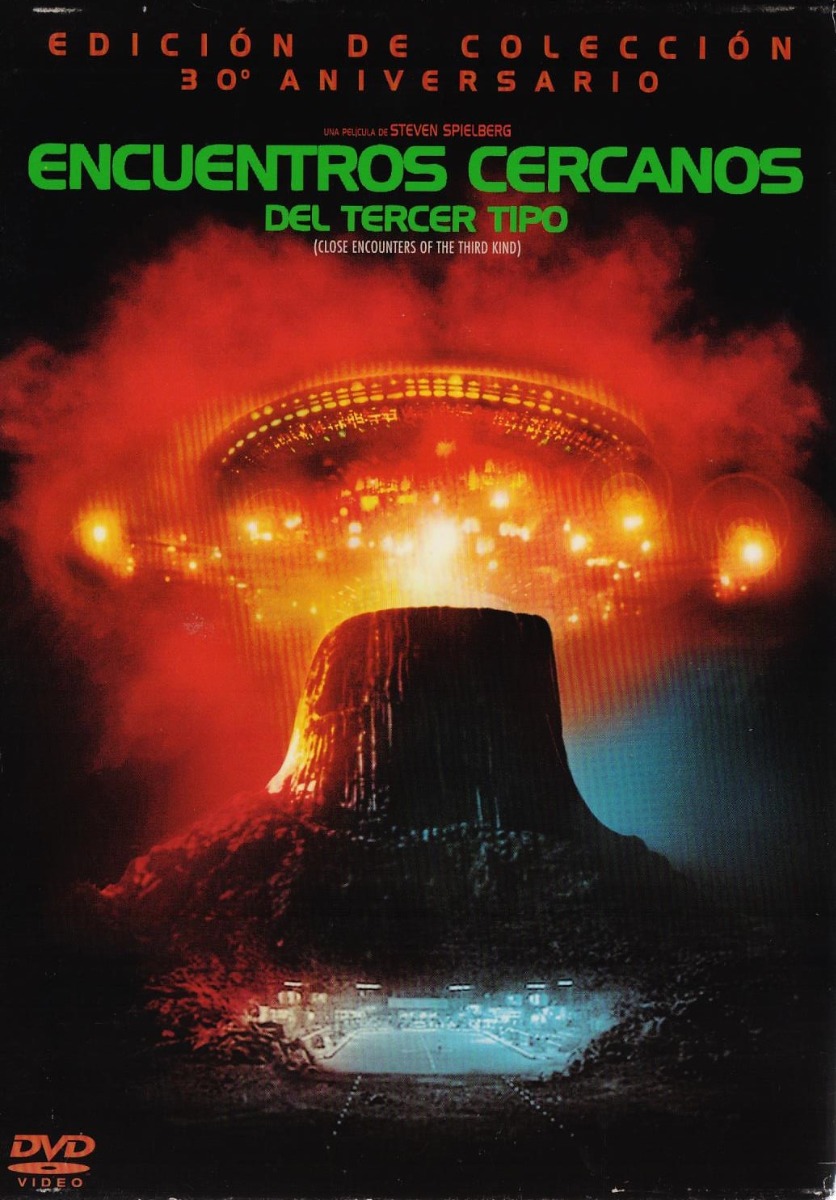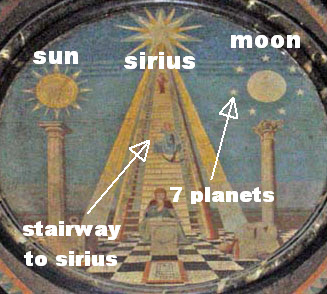|
|
|
|
22/7=3.14=PI
12 PUNTOS EN SU CIRCUNFERENCIA=RELOJ=SANTA CENA
LONGITUD CIRCUNFERENCIA=PIxDIAMETRO
 |
|
|
|
|
|
|
|
|
|
|
Sabemos que Vesica Piscis esta en funcion al a los 153 peces de Juan 21:11.
 Aqui tenemos a Pi - la circunferencia del toro y la vesica piscis 256/153 equivalente a la raiz cuadrada de 3 En el hipercubo las coordinadas binarias de Piscis son decimal 3 y binario 11 153 los pescados de Jesus en la biblia
Sapientia Aedificavit Sibi Domum. Es decir, "la sabiduría ha edificado aquí su casa". Resulta curioso que la misma frase aparece en el Evangelio de María Magdalena, un texto apócrifo. Se dice que en el interior de esta iglesia y de otras muchas de Venecia está escondido el tesoro de los templarios. Pero no hay ninguna prueba de ello. Para terminar ya con esta entrada me gustaría que nos acercásemos un momento a uno de los edificios más emblemáticos de Venecia: el Palacio Ducal.
|
|
|
|
|
ISLA SAN GIORGIO (VENECIA)=GEORGE LEMAITRE
GEMATRIA EN INGLES DE SEED=33
GEMATRIA EN INGLES DE GATE=33
SARA (CE-SAREA DE FILIPO)=PARALELO 33
 the Apple
| milky way in Simple Gematria Equals: 119 |
( |
m 13 |
i9 |
l 12 |
k 11 |
y 25 |
0 |
w 23 |
a1 |
y 25 |
) |
| queen mary in Simple Gematria Equals: 119 |
( |
q 17 |
u 21 |
e5 |
e5 |
n 14 |
0 |
m 13 |
a1 |
r 18 |
y 25 |
|
| hebrew calendar in Simple Gematria Equals: 119 |
( |
h8 |
e5 |
b2 |
r 18 |
e5 |
w 23 |
0 |
c3 |
a1 |
l 12 |
e5 |
n 14 |
d4 |
a1 |
r 18 |
| mary magdalene in Simple Gematria Equals: 119 |
( |
m 13 |
a1 |
r 18 |
y 25 |
0 |
m 13 |
a1 |
g7 |
d4 |
a1 |
l 12 |
e5 |
n 14 |
e5 |
|

|
|
|
|
|
Fusion reactor
Alternative Titles: fusion power plant, thermonuclear reactor
Fusion reactor, also called fusion power plant or thermonuclear reactor, a device to produce electrical power from the energy released in a nuclear fusion reaction. The use of nuclear fusion reactions for electricity generation remains theoretical.
Read More on This Topic
energy conversion: Fusion reactors
In the late 1930s Hans A. Bethe, a German-born physicist, recognized that the fusion of hydrogen nuclei to form deuterium releases energy.…
Since the 1930s, scientists have known that the Sun and other stars generate their energy by nuclear fusion. They realized that if fusion energy generation could be replicated in a controlled manner on Earth, it might very well provide a safe, clean, and inexhaustible source of energy. The 1950s saw the beginning of a worldwide research effort to develop a fusion reactor. The substantial accomplishments and prospects of this continuing endeavour are described in this article.
General characteristics
The energy-producing mechanism in a fusion reactor is the joining together of two light atomic nuclei. When two nuclei fuse, a small amount of mass is converted into a large amount of energy. Energy (E) and mass (m) are related through Einstein’s relation, E = mc2, by the large conversion factor c2, where c is the speed of light (about 3 × 108 metres per second, or 186,000 miles per second). Mass can be converted to energy also by nuclear fission, the splitting of a heavy nucleus. This splitting process is utilized in nuclear reactors.
Fusion reactions are inhibited by the electrical repulsive force, called the Coulomb force, that acts between two positively charged nuclei. For fusion to occur, the two nuclei must approach each other at high speed in order to overcome their electrical repulsion and attain a sufficiently small separation (less than one-trillionth of a centimetre) so that the short-range strong force dominates. For the production of useful amounts of energy, a large number of nuclei must undergo fusion; that is to say, a gas of fusing nuclei must be produced. In a gas at extremely high temperatures, the average nucleus contains sufficient kinetic energy to undergo fusion. Such a medium can be produced by heating an ordinary gas beyond the temperature at which electrons are knocked out of their atoms. The result is an ionized gas consisting of free negative electrons and positive nuclei. This ionized gas is in a plasma state, the fourth state of matter. Most of the matter in the universe is in the plasma state.
At the core of experimental fusion reactors is a high-temperature plasma. Fusion occurs between the nuclei, with the electrons present only to maintain macroscopic charge neutrality. The temperature of the plasma is about 100,000,000 kelvins (K; about 100,000,000 °C, or 180,000,000 °F), which is more than six times the temperature at the centre of the Sun. (Higher temperatures are required for the lower pressures and densities encountered in fusion reactors.) A plasma loses energy through processes such as radiation, conduction, and convection, so sustaining a hot plasma requires that fusion reactions add enough energy to balance the energy losses. In order to achieve this balance, the product of the plasma’s density and its energy confinement time (the time it takes the plasma to lose its energy if unreplaced) must exceed a critical value.
Stars, including the Sun, consist of plasmas that generate energy by fusion reactions. In these natural fusion reactors, plasma is confined at high pressures by the immense gravitational field. It is not possible to assemble on Earth a plasma sufficiently massive to be gravitationally confined. For terrestrial applications, there are two main approaches to controlled fusion—namely, magnetic confinement and inertial confinement.
In magnetic confinement a low-density plasma is confined for a long period of time by a magnetic field. The plasma density is roughly 1021 particles per cubic metre, which is many thousands of times less than the density of air at room temperature. The energy confinement time must then be at least one second—i.e., the energy in the plasma must be replaced every second.
In inertial confinement no attempt is made to confine the plasma beyond the time it takes the plasma to disassemble. The energy confinement time is simply the time it takes the fusing plasma to expand. Confined only by its own inertia, the plasma survives for only about one-billionth of a second (one nanosecond). Hence, breakeven in this scheme requires a very large particle density, typically about 1030particles per cubic metre, which is about 100 times the density of a liquid. A thermonuclear bomb is an example of an inertially confined plasma. In an inertial confinement power plant, the extreme density is achieved by compressing a millimetre-scale solid pellet of fuel with lasers or particle beams. These approaches are sometimes referred to as laser fusion or particle-beam fusion.
The fusion reaction least difficult to achieve combines a deuteron (the nucleus of a deuterium atom) with a triton (the nucleus of a tritium atom). Both nuclei are isotopes of the hydrogen nucleus and contain a single unit of positive electric charge. Deuterium-tritium (D-T) fusion thus requires the nuclei to have lower kinetic energy than is needed for the fusion of more highly charged, heavier nuclei. The two products of the reaction are an alpha particle (the nucleus of a helium atom) at an energy of 3.5 million electron volts (MeV) and a neutron at an energy of 14.1 MeV (1 MeV is the energy equivalent of a temperature of about 10,000,000,000 K). The neutron, lacking electric charge, is not affected by electric or magnetic fields and can escape the plasma to deposit its energy in a surrounding material, such as lithium. The heatgenerated in the lithium “blanket” can then be converted to electrical energy by conventional means, such as steam-driven turbines. The electrically charged alpha particles, meanwhile, collide with the deuterons and tritons (by their electrical interaction) and can be magnetically confined within the plasma, thereby transferring their energy to the reacting nuclei. When this redeposition of the fusion energy into the plasma exceeds the power lost from the plasma, the plasma will be self-sustaining, or “ignited.”
Although tritium does not occur naturally, tritons and alpha particles are produced when neutrons from the D-T fusion reactions are captured in the surrounding lithium blanket. The tritons are then fed back into the plasma. In this respect, D-T fusion reactors are unique as they use their waste (neutrons) to generate more fuel. Overall, a D-T fusion reactor uses deuterium and lithium as fuel and generates helium as a reaction by-product. Deuterium can be readily obtained from seawater—about one in every 3,000 water molecules contains a deuterium atom. Lithium is also abundant and inexpensive. In fact, there is enough deuterium and lithium in the oceans to provide for the world’s energy needs for billions of years. With deuterium and lithium as the fuel, a D-T fusion reactor would be an effectively inexhaustible source of energy.
A practical fusion reactor would also have several attractive safety and environmental features. First, a fusion reactor would not release the pollutants that accompany the combustion of fossil fuels—in particular, the gases that contribute to global warming. Second, because the fusion reaction is not a chain reaction, a fusion reactor cannot undergo a runaway chain reaction, or “meltdown,” as can happen in a fission reactor. The fusion reaction requires a confined hot plasma, and any interruption of a plasma control system would extinguish the plasma and terminate fusion. Third, the main products of a fusion reaction (helium atoms) are not radioactive. Although some radioactive by-products are produced by the absorption of neutrons in the surrounding material, low-activation materials exist such that these by-products have much shorter half-lives and are less toxic than the waste products of a nuclear reactor. Examples of such low-activation materials include special steels or ceramic composites (e.g., silicon carbide).
Principles of magnetic confinement
Confinement physics
Magnetic confinement of plasmas is the most highly developed approach to controlled fusion. A large part of the problem of fusion has been the attainment of magnetic field configurations that effectively confine the plasma. A successful configuration must meet three criteria: (1) the plasma must be in a time-independent equilibrium state, (2) the equilibrium must be macroscopically stable, and (3) the leakage of plasma energy to the bounding wall must be small.
Charged particles tend to spiral about a magnetic line of force. It is necessary that these particle trajectories do not intersect the bounding wall. Simultaneously, the thermal energy of all the particles exerts an expansive pressure force on the plasma. For the plasma to be in equilibrium, the magnetic force acting on the electric current within the plasma must balance the pressure force at every point in the plasma.
This equilibrium must be stable, which is to say that the plasma will return to its original state following any small perturbation, such as continual random thermal “noise” fluctuations. In contrast, an unstable plasma would likely depart from its equilibrium state and rapidly (perhaps in less than one-thousandth of a second) escape the confining magnetic field following any small perturbation.
A plasma in stable equilibrium can be maintained indefinitely if the leakage of energy from the plasma is balanced by energy input. If the plasma energy loss is too large, then ignition cannot be achieved. An unavoidable diffusion of energy across the magnetic field lines will occur from the collisions between the particles. The net effect is to transport energy from the hot core to the wall. In theory, this transport process, known as classical diffusion, is not strong in hot fusion plasmas and can be compensated by heat from the alpha particle fusion products. In experiments, however, energy is lost from the plasma at 10 to 100 times that expected from classical diffusion theory. Solution of the anomalous transport problem involves research into fundamental topics in plasma physics, such as plasma turbulence.
Many different types of magnetic configurations for plasma confinement have been devised and tested over the years. These may be grouped into two classes: closed, toroidal configurations and open, linear configurations. Toroidal devices are the most highly developed. In a simple straight magnetic field, the plasma would be free to stream out the ends. End loss can be eliminated by forming the plasma and field in the closed shape of a doughnut, or torus, or, in an approach called mirror confinement, by “plugging” the ends of such a device magnetically and electrostatically.
|
|
|
|
|
Toroidal confinement
The most extensively investigated toroidal confinement concept is the tokamak. The tokamak (an acronym derived from the Russian words for “toroidal magnetic confinement”) was introduced in the mid-1960s by Soviet plasma physicists. The magnetic lines of force are helixes that spiral around the torus. The helical magnetic field has two components: (1) a toroidal component, which points the long way around the torus, and (2) a poloidal component directed the short way around the machine. Both components are necessary for the plasma to be in stable equilibrium. If the poloidal field were zero, so that the field lines were simply circles wrapped about the torus, then the plasma would not be in equilibrium. The particles would not strictly follow the field lines but would drift to the walls. The addition of the poloidal field provides particle orbits that are contained within the device. If the toroidal field were zero, so that the magnetic field lines were directed only the short way around the torus, the plasma would be in equilibrium, but it would be unstable. The plasma column would develop growing distortions, or kinks, which would carry the plasma into the wall.
The toroidal field is produced by coils that surround the toroidal vacuum chamber containing the plasma. (The plasma must be situated within an evacuated chamber to prevent it from being cooled by interactions with air molecules.) In order to minimize power losses in the coils, designs involving superconducting coils have begun to replace copper coils. The plasma in a tokamak fusion reactor would have a major diameter in the range of 10 metres (33 feet) and a minor diameter of roughly 2 to 3 metres. The plasma current would likely be on the order of tens of millions of amperes, and the flex density of the toroidal magnetic field would measure several teslas. In order to help guide research and development, scientists frequently perform conceptual designs of fusion reactors. One such concept is shown in the figure. This device in theory would generate 1 gigawatt (1 billion watts) of electric power—sufficient to meet the electricity needs of a large city.
The poloidal field is generated by a toroidal electric current that is forced to flow within the conducting plasma. Faraday’s law of induction can be used to initiate and build up the current. A solenoid located in the hole of the torus can be used to generate magnetic flux that increases over time. The time-varying flux induces a toroidal electric field that drives the plasma current. This technique efficiently drives a pulsed plasma current. However, it cannot be used for a steady-state current, which would require a magnetic flux increasing indefinitely over time. Unfortunately, a pulsed reactor would suffer from many engineering problems, such as materials fatigue, and thus other methods have been developed to drive a steady-state current to produce the poloidal magnetic field.
A technique known as radio-frequency (RF) current drive employs electromagnetic radiation to generate a steady-state current. Electromagnetic waves are injected into the plasma so that they propagate within the plasma in one direction around the torus. The speed of the waves is chosen to equal roughly the average speed of the electrons in the plasma. The wave electric field (which in a plasma has a component along its direction of travel) can then continuously accelerate the electrons as the wave and particles move together around the torus. The electrons develop a net motion, or current, in one direction.
Another established current-drive technique is neutral-beam current drive. A beam of high-energy neutral atoms is injected into the plasma along the toroidal direction. The neutral beam will freely enter the plasma since it is unaffected by the magnetic field. The neutral atoms become ionized by collisions with the electrons. The beam then consists of energetic positively charged nuclei that are confined within the plasma by the magnetic field. The high-speed ions travel toroidally along the magnetic field and collide with the electrons, pushing them in one direction and thereby producing a current.
Both RF and neutral-beam current-drive techniques have a low efficiency (i.e., they require a large amount of power to drive the plasma current). Fortunately, a remarkable effect occurs in tokamak plasmas that reduces the need for external current drive. If the plasma pressure is greater in the core than at the edge, this pressure differential spontaneously drives a toroidal current in the plasma. This current is called the bootstrap current. It can be considered a type of thermoelectric effect, but its origin is in the complex particle dynamics that arise in a toroidal plasma. It has been observed in experiments and is now included routinely in advanced experiments and in tokamak reactor designs.
Other toroidal confinement concepts that offer potential advantages over the tokamak are being developed. Three such alternatives are the stellarator, reversed-field pinch (RFP), and compact torus concepts. The stellarator and RFP are much like the tokamak. In the stellarator the magnetic field is produced by external coils only. Thus, the plasma current is essentially zero, and the problems inherent in sustaining a large plasma current are absent. The RFP differs from the tokamak in that it operates with a weak toroidal magnetic field. This results in a compact, high-power-density reactor with copper (instead of superconducting) coils. Compact tori are toroidal plasmas with no hole in the centre of the torus. Reactors based on compact tori are small and avoid the engineering complications of coils linking the plasma torus.
Mirror confinement
An alternative approach to magnetic confinement is to employ a straight configuration in which the end loss is reduced by a combination of magnetic and electric plugging. In such a linear fusion reactor the magnetic field strength is increased at the ends. Charged particles that approach the end slow down, and many are reflected from this “magnetic mirror.” (The same magnetic reflection mechanism traps particles in the Earth’s magnetosphere, specifically in the Van Allen radiation belts.) Unfortunately, particles with extremely high speed along the field are not stopped by the mirror. To inhibit this leakage, electrostatic plugging is provided. An additional section of plasma is added at each end beyond the magnetic mirror. The plasma in these “end plugs” produces an electrostatic potential barrier to nuclei. The overall configuration is called a tandem mirror.
Plasma heating
A plasma needs to be heated to about 100,000,000 K for fusion reactions to take place. Two plasma-heating methods have been highly developed: electromagnetic wave heating and neutral-beam injection heating. In the former, electromagnetic waves are directed by antennas at the surface of the plasma. The waves penetrate the plasma and transfer their energy to the constituent particles. Ionized gases can support the propagation of a remarkably large variety of waves not found in other forms of matter. Effective wave-heating techniques employ frequencies from the radio-frequency range to the microwave range. Power absorption often relies upon a resonant interaction between the wave and plasma. For example, if the frequency of the electromagnetic wave is equal to the frequency at which a nucleus gyrates about a magnetic field line, this resonant nucleus absorbs energy from the wave. This technique is called ion cyclotron resonance heating. Similarly, electron cyclotron resonance heating may be used to heat electrons. Such electron heating requires very high frequencies (tens to hundreds of gigahertz), such as produced by free-electron lasers and gyrotron tubes.
In the second method, beams of neutral atoms at high energy (up to about one million electron volts) are injected into the plasma, rather as in the neutral-beam current drive described above. When used for heating, however, the beams are injected in both directions around the torus, so that no net momentum is imparted to the plasma. The slowing down, or transfer of beam energy to the plasma, constitutes the heating mechanism.
Principles of inertial confinement
In an inertial confinement fusion (ICF) reactor, a tiny solid pellet of fuel—such as deuterium-tritium (D-T)—would be compressed to tremendous density and temperature so that fusion power is produced in the few nanoseconds before the pellet blows apart. The compression is accomplished by focusing an intense laser beam or a charged particle beam, referred to as the driver, upon the small pellet (typically 1 to 10 mm in diameter). For efficient thermonuclear burn, the time allotted for the pellet to burn must be less than the disassembly time. This means that, in the compressed state, the product of the pellet mass density and the pellet radius must exceed about 3 grams per square centimetre. A high mass density will hasten the burn, and a large radius will slow the disassembly time. The ratio of fusion energy produced in the pellet explosion to the driver energy is called the pellet gain. High pellet gains of 100 or more are required for an ICF reactor.
Laser fusion.Encyclopædia Britannica, Inc.
Pellets are multilayered, consisting of several concentric spheres. The surface of the pellet is ionized by the driver beam, and ablation of the ionized material generates a large inward force on the pellet. Recoil from the ablation implodes the inner layer, producing a shock wave that compresses the inner layers of the D-T fuel. The implosion speed is several hundred kilometres per second, produced by a force equivalent to some 10 billion atmospheres. The target layers are designed such that the laser or particle-beam energy provides compression, not heat (entropy), during this stage. At the final stage of compression, the pellet is compressed to 1,000 to 10,000 times the density of typical solids.
In conventional ICF (usually referred to as shock-heated ICF), the laser or particle-beam energy pulses are accurately set such that the shocks produced during the implosion phase converge in the centre of the pellet, heating it to fusion temperatures. The burn initiates in the central D-T layer and spreads outward as the alpha particles collide with and heat the rest of the pellet to a value sufficient to produce fusion reactions. Ignition occurs, and the pellet, now a dense plasma, is burned up in a small microexplosion. An alternative method for ICF, known as fast ignition, has emerged in recent years because of rapid progress in generating intense picosecond (10−12 second) laser systems. Fast ignition can reduce the driver energy considerably. In this scheme, the main laser or particle beam is used to compress the fuel similar to shock heating. Then a short, intense laser pulse heats a small portion of the compressed fuel to fusion temperature, initiating the fusion burn. This approach may lead to target gains that are 3 to 10 times larger than in shock heating.
It is essential that the implosion of the outer layer of the target be symmetric and uniform to a high degree of accuracy. Any asymmetry can grow during compression, and, more important, the shocks may not precisely converge on the centre, which would prevent ignition of the fuel. Thus, the pellet must be manufactured with a high degree of smoothness, with tolerances of less than a thousandth of a millimetre. The driver should also deposit its energy on the pellet uniformly, with a variation of less than 1 percent. There are two methods to achieve this uniformity. In the first method, known as indirect drive, the pellet is located inside a hollow cylindrical shell known as a hohlraum, and the driver is aimed at the walls of the hohlraum. The hohlraum absorbs the driver’s energy and then radiates the target with intense X-rays, which cause the pellet to heat and implode. Because a hohlraum is effectively a resonant cavity, the X-ray intensity on the target will be quite uniform even if few driver beams are used. The drawback of this technique is that the target gain is reduced because of inefficiency in converting the driver energy to X-rays. A higher gain is seen in the second method, known as direct drive, but here the driver system is much more complex, as many driver beams and special optical elements are needed to achieve the necessary uniform delivery of energy to the target.
Development of fusion reactor technology
Several decades of fusion research have produced accomplishments of two types. First, the discipline of plasma physics has developed to the point that theoretical and experimental tools permit quantitative evaluation of many aspects of fusion reactor concepts. Second, and perhaps most revealing, the evolutionary improvement of plasma parameters has placed experiments at the threshold of energy breakeven, in which energy input to the plasma is equal to fusion energy produced.
Fusion research experiments are performed with hydrogen or deuterium plasmas in most cases. For years, radioactive tritium was not added, because remote-handling requirements complicated the experiments. However, in 1991 the first tritium-deuterium reaction was carried out. The “burn” lasted for two seconds and released a record amount of energy, approximately 20 times that released in deuterium-deuterium experiments.
A figure of merit with which to judge the plasma quality is the energy gain Q that would occur if the plasma contained tritium. From 1965 to 1995, Q increased from 10−7 to 1 (breakeven).
A wide variety of plasma experiments have been performed to investigate many aspects of the fusion problem. Performances closest to the level of a practical fusion reactor have been attained in three flagship experiments in Europe, Japan, and the United States. These large tokamak facilities are the Joint European Torus (JET), a multinational western European venture operated in England; the Tokamak-60 (JT-60) of the Japan Atomic Energy Research Institute; and the Tokamak Fusion Test Reactor (TFTR) at the Princeton Plasma Physics Laboratory in New Jersey, respectively.
In 1994 a major milestone was achieved when the TFTR generated 10 megawatts of fusion power. Up to that time, almost all fusion experiments had been operated with hydrogen or deuterium plasmas. TFTR was fueled with a mixture of deuterium and tritium. Experimentation with fusing plasmas is critical to establish the effect of the fusion reactions (and the high-energy alpha particles that they produce) on plasma behaviour. In 1997, JET generated 16 megawatts of peak power with a fusion gain (the ratio of fusion power produced to the net input power) of 0.6.
A next major step in the development of fusion power is the construction of a facility to study the physics of a burning, ignited plasma (with Q being infinite). The presence of alpha particles can alter the behaviour of the plasma in ways not easily simulated in nonburning plasmas. It is anticipated that this will occur in a planned new experiment, the International Thermonuclear Experimental Reactor (ITER) to be constructed at Cadarache, France. This is a very large experiment that will investigate both the physics of an ignited plasma and reactor technology. The large cost of the device has encouraged international collaboration in its design and funding, with participation from the European Union, Japan, China, India, South Korea, Russia, and the United States.
With the tremendous advances in scientific understanding and plasma quality, questions regarding the engineering and economic attractiveness of the tokamak concept have received greater attention. Materials development is required. For example, the wall exposed to the plasma must survive intense neutron bombardment. The optimal path to fusion energy production involves some balance between further upscaling of the current tokamak concept toward reactor parameters and improvement of the magnetic confinement concept. Improvements can accrue from enhanced scientific understanding through research and by the development of alternative, non-tokamak concepts, as well as improvements to the tokamak. A significant thrust in tokamak research is to develop more-compact tokamaks with higher plasma pressure. Such advanced tokamaks are expected to be more economical.
Inertial confinement
ICF research has followed an evolutionary path similar to that of magnetic fusion. In the laser fusion approach, densities ranging from 100 to 200 times liquid deuterium-tritium density have been achieved. For example, at the Lawrence Livermore National Laboratory in California, a product of density and energy-confinement time of 5 × 1014 seconds per cubic centimetre has been achieved employing the world’s largest and most powerful laser, the Nova laser. (The Nova is a 10-beam neodymium-glass laser operated at an energy level of 40,000 joules in a one-nanosecond pulse.) Although the value of this product is comparable to that representing breakeven for magnetic fusion, laser fusion requires a larger value to overcome the rather poor efficiency of existing lasers.
As a result of such progress, the National Ignition Facility, a laser fusion experiment that will achieve ignition, has been constructed in the United States. However, this facility, also located at Livermore, is funded primarily for its application to weapons research, not energy research.
Laser-activated fusionInterior of the U.S. Department of Energy's National Ignition Facility (NIF), located at Lawrence Livermore National Laboratory, Livermore, California. The NIF target chamber uses a high-energy laser to heat fusion fuel to temperatures sufficient for thermonuclear ignition. The facility is used for basic science, fusion energy research, and nuclear weapons testing.U.S. Department of Energy
The International Thermonuclear Experimental Reactor (ITER) project is a cooperation between the European Union, the United States, China, India, Japan, Russia, and South Korea to build in southern France a prototype fusion reactor with the world’s largest tokamak. The multibillion dollar project is scheduled for completion in 2025 and seeks to prove the feasibility of nuclear fusion as a large-scale source of energy.
In both the magnetic and inertial confinement programs, the experimental steps become more expensive as the reactor regime is approached. At the same time, basic research and innovation are needed to enhance the attractiveness of the reactor concepts. Significant wisdom is required to balance these needs and to build effectively upon the impressive results to date so that nuclear fusion can indeed become a major factor in meeting the world’s ever-growing energy needs.
https://www.britannica.com/technology/fusion-reactor
|
|
|
|
|
BABILONIA LA RAMERA ES UNA MUJER Y ES LA MISMA BESTIA
ESTA EN LA GRAFICA

|
|
|
|
|
ES OBVIO EL NEXO DE LA SERPIENTE CON LA MUJER
NOTEN EL NEXO DE DAN, CON LA SERPIENTE (VENECIA) Y EL CABALLO (PLAZA SAN MARCOS)
7. Génesis 49:17 Será Dan SERPIENTE junto al camino, Víbora junto a la senda, Que muerde los talones del caballo, Y hace caer hacia atrás al jinete.
|
|
|
|
|
BABILONIA LA RAMERA ES UNA MUJER Y ES LA MISMA BESTIA
BABILONIA LA RAMERA ES UNA MUJER Y ES LA MISMA BESTIA
PARA NO CREER PERO ESTO ES ASI. LA RELACION DEL DINERO / MONEY / MOON / CON LA LUNA EN EL CONTEXTO A LA TRANSFIGURACION EN EL MONTE HERMON / MON / LUNA EN LA TRIBU DE DAN / DINERO / SERPIENTE. TODO ES UN NEXO CON LA TRANSFIGURACION DEL SEÑOR. DINERO ES TIEMPO MISMO.
ES OBVIO EL NEXO DE LA SERPIENTE CON LA MUJER
NOTEN EL NEXO DE DAN, CON LA SERPIENTE (VENECIA) Y EL CABALLO (PLAZA SAN MARCOS)
7. Génesis 49:17 Será Dan SERPIENTE junto al camino, Víbora junto a la senda, Que muerde los talones del caballo, Y hace caer hacia atrás al jinete.
 1200 1200
|
|
|
|
|

 the Apple 
LLAVE DE ORO Y DE PLATA AL IGUAL QUE LA MANZANA



LA PIEDRA FILOSOFAL DE LA ALQUIMIA. GENESIS 3.14=NACIMIENTO DE EINSTEIN (STEIN=PIEDRA=PEDRO). ¿PORQUE EINSTEIN NACIO EN EL 14 DE MARZO osea una referencia al PI=3.14? ¿FUE ALBERT EINSTEIN UN ALQUIMISTA? SIN PALABRAS, ESTA TODO CODIFICADO. TODO ES ALQUIMIA. TODO ESTA INTERRELACIONADO. LA ECONOMIA, LA FISICA, LA FILOSOFIA, LA TEOLOGIA, LA SOCIOLOGIA, LA ASTRONOMIA, LA PSICOLOGIA, EGIPTOLOGIA, MATEMATICAS, ETC,ETC. ¿PORQUE NO SE ENSEÑA ESTO EN LAS UNIVERSIDADES Y TAMPOCO EN LAS DENOMINACIONES RELIGIOSAS TRADICIONALES? ¿ES MAGIA O ES ALQUIMIA? ES OBVIO, EL NEXO CON EL PENTAGONO O LA MANZANA EN EL CONTEXTO A PROVERBIOS 25:11 (SABIDURIA DE SALOMON). LA TEORIA DE LA RELATIVIDAD, AL DEPENDER DEL NUMERO PI, ES OBVIO QUE TAMBIEN DEPENDE DE PHI, EN EL MARCO QUE PI=4/RAIZ CUADRADA DE PHI, COMO LO CONFIRMA LA GRAN PIRAMIDE (PI_RAMIDE). OSEA VOLVEMOS AL 3.14. ¿EL VERDADERO VALOR DE PI ES EL TRADICIONAL O EL DE LA GRAN PIRAMIDE QUE DEPENDE DEL NUMERO 4, UNA OBVIA REFERENCIA A LAS 4 FASES DE LA LUNA O CUARTO MANDAMIENTO DE LA BIBLIA?
¿COMO SE EXPLICA QUE EL NACIMIENTO DE ALBERT EINSTEIN FUE UN 14 DE MARZO E INCLUSO LA MUERTE DE STEPHEN HAWKING? ¿FUERON VIAJEROS EN EL TIEMPO O HAY UN DIOS TODOPODEROSO QUE NO JUEGA A LOS DADOS? TODO ESTA CODIFADO.
LA RELATIVIDAD DE EINSTEIN EN FUNCION A LA GRAN PIRAMIDE
 900 × 582 900 × 582
Sabemos que Vesica Piscis esta en funcion al a los 153 peces de Juan 21:11.
 Aqui tenemos a Pi - la circunferencia del toro y la vesica piscis 256/153 equivalente a la raiz cuadrada de 3 En el hipercubo las coordinadas binarias de Piscis son decimal 3 y binario 11 153 los pescados de Jesus en la biblia
|
|
|
|
|
|
|
|
EN VENECIA ESTA EL SECRETO


STEVEN SPIELBERG (SEVEN/EVE/MARY MAGDALENE)
| Steven Spielberg |

.
|
|
| Nombre de nacimiento |
Steven Allan Spielberg |
| Nacimiento |
18 de diciembre de 1946 (72 años)
Cincinnati (Ohio, Estados Unidos) |
| Nacionalidad |
Estadounidense |
| Religión |
Judaísmo |
| Partido político |
|
| Familia |
| Cónyuge |
Amy Irving (matr. 1985; div. 1989)
Kate Capshaw (matr. 1991) |
| Hijos |
6 |
| Educación |
| Educado en |
|
|
| Sitio web |
www.spielbergfilms.com  |
|
|
CINCINATTI TAMBIEN ES UNA CIUDAD DE SIETE COLINAS, OSEA UNA NUEVA ROMA.
ST-EVE-N/S-EVE-N/EVE/MARY MAGDALENE
S-EVE-N HILLS/ REVELATION 17:9
S-EVE-N HILLS/ REVELATION 17:9
S-EVE-N DEMONS (MARY MAGDALENE)
 
   
¿En qué estado de EEUU queda la montaña Torre del diablo que aparece en la película Encuentros cercanos del tercer tipo?
El Monumento Nacional de la Torre del Diablo (en inglés, Devil's Tower) de los Estados Unidos (en lakota: Mato Tipila, que significa «Aposento del Oso») es una intrusión ígnea monolítica o cuello volcánico situado en Colinas Negras, cerca de Hulett y Sundance en el condado de Crook, al noreste del estado de Wyoming, sobre el río Belle Fourche.
Se eleva de manera espectacular 386 m por encima del terreno circundante y su cumbre se encuentra a 1.558 m por encima del nivel del mar. Se encuentra formada por columnas basálticas.
En la película Encuentros en la tercera fase (Encuentros cercanos del tercer tipo "Close Encounters of the Third Kind") (1977), Steven Spielberg centra el encuentro de los extraterrestres con los humanos en esta montaña.
https://es.quizzclub.com/trivia/en-que-estado-de-eeuu-queda-la-montana-torre-del-diablo-que-aparece-en-la-pelicula-encuentros-cercanos-del-tercer-tipo/answer/175321/

|
|
|
|
|

ISLA SAN GIORGIO (VENECIA)=GEORGE LEMAITRE

BABILONIA LA RAMERA ES UNA MUJER Y ES LA MISMA BESTIA
ESTA EN LA GRAFICA

https://www.kienyke.com/historias/enigmatico-viajar-en-el-tiempo-cuantico
8 ene. 2018 - ... Kurt Gödel un brillante matemático amigo de Einstein, sugirió que para ir al pasado era necesario desdoblar el tiempo a través de un atajo y llegar a cualquier parte antes que la luz. Basados en esta hipótesis, algunos físicos cuánticos de la actualidad descubrieron que los agujeros de gusanos pueden ...
https://matap.dmae.upm.es/cienciaficcion/narraciones/.../agujerosdegusano.htm
Entre éstas se destacan el cilindro de longitud infinita y compuesto de polvo en rotación rápida de Van Stockum, y el universo en rotación propuesto por Kurt Gödel. La matemática de estas soluciones muestra que ambas contienen trayectorias en el espacio-tiempo que permiten viajar hacia el pasado y retornar al ...
www.aecomunicacioncientifica.org/que-dice-la-fisica-sobre-los-viajes-en-el-tiempo/
5 may. 2016 - El viaje se realizaría a través de un wormhole (literalmente, un agujero de gusano), un túnel a través del espacio-tiempo. ... Para terminar, citaré que el famoso matemático Kurt Gödelpropuso en 1949 un modelo cosmológico compatible con la relatividad general, en el que los viajes en el tiempo serían ...
https://books.google.com.ar/books?isbn=6073137427
Kurt Gödel 1 y Kip Thorne2 han demostrado que los agujeros de gusano podrían engendrar unos nudos temporales, unos pasajes del presente hacia el pasado. Así se vuelven verdaderas máquinas para pasear por el tiempo pasado. Si la entrada del agujero de gusano (el agujero negro) es inmóvil en relación con ...
www.lehman.edu/faculty/anchordoqui/tuneles2.htm
Entre estas se destacan el cilindro de longitud infinita y compuesto de polvo en rotación rápida de Van Stockum, y el universo en rotación propuesto por Kurt Gödel. ... Supongamos (figura 3) que existe unagujero de gusano atravesable cuyas bocas, separadas por una distancia mucho mayor que el radio de su garganta, ...
blogs.publico.es/kaostica/2014/11/06/interstellar/
6 nov. 2014 - Antes de adentrarnos en los agujeros de gusano, es preciso entender qué son los agujeros negros y, sobre todo, los menos conocidos agujeros blancos. ... En 1949, Kurt Gödel, buen amigo de Albert Einstein, planteó un modelo cosmológico para un universo en rotación consistente con la Relatividad ...
https://books.google.com.ar/books?isbn=8483230755
Yervant Terzian (ed.), Elizabeth Bilson (ed.) - 1999 - Science
En el lado del agujero de gusano que ocupa Carolee es domingo (aunque solo haya envejecido una hora hasta llegar a este punto). ... gran matemático Kurt Gódel (1949), el universo aparece girando a alta velocidad y dotado de una constante cosmológica, con lo que se convierte en una máquina gigantesca del tiempo.
historiadeltiempo-edgardo.blogspot.com/.../capitulo-10-agujeros-de-gusano-y-viajes.h...
5 may. 2011 - viajes en el tiempo se produjo en 1949 cuando Kurt Gödel descubrió un nuevo. espacio-tiempo permitido por la teoría de la relatividad. Gödel fue un matemático. que se hizo famoso al demostrar que es imposible probar todas las afirmaciones. verdaderas, incluso si nos limitáramos a tratar de probar las ...
 
|
|
|
 Primer Primer
 Anterior
20 a 34 de 79
Siguiente Anterior
20 a 34 de 79
Siguiente Último
Último
|





